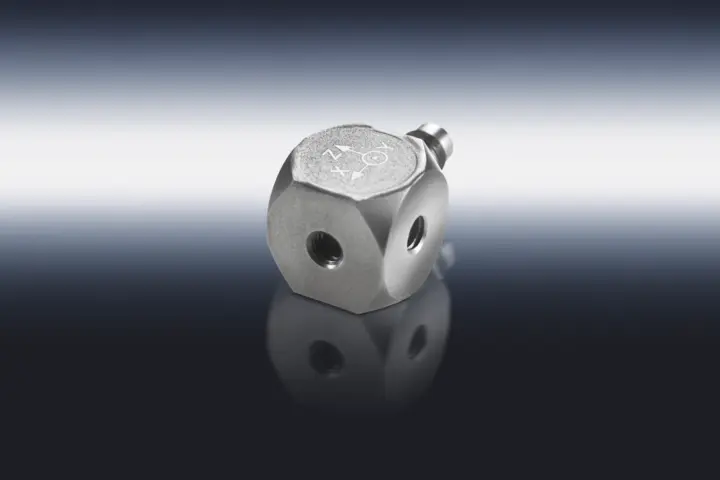Measuring micro-vibrations is crucial for many applications. Especially in the automotive and aerospace industries, these tests may take place near engines and other heat sources which can cause extreme temperature changes during the measurements. With a regular accelerometer, the effects of heat fluctuations must be eliminated via an algorithm to guarantee precise data. This requires a lot of expertise as well as exact knowledge of the technology being used.
The IEPE (Integrated Electronics Piezoelectric) triaxial accelerometers of the 8766A family offer a more user-friendly solution: Thanks to its unique piezoelectric element, these temperature changes do not affect these sensors. Instead of quartz, they are based on PiezoStar crystals, which Kistler grows in its own facilities. PiezoStar elements are extremely stiff, providing sensors with a high natural frequency for improved accuracy. Their main advantage, however, is their temperature resistance: fluctuations between -75°F and 330°F or -60°C and 165°C only have minimal effects on the sensitivity of accelerometers with this special piezoelectric material.




![Vibration monitoring at fluctuating and high temperatures [object Object]](https://kistler.cdn.celum.cloud/SAPCommerce_Document_Preview/999-244e.webp)